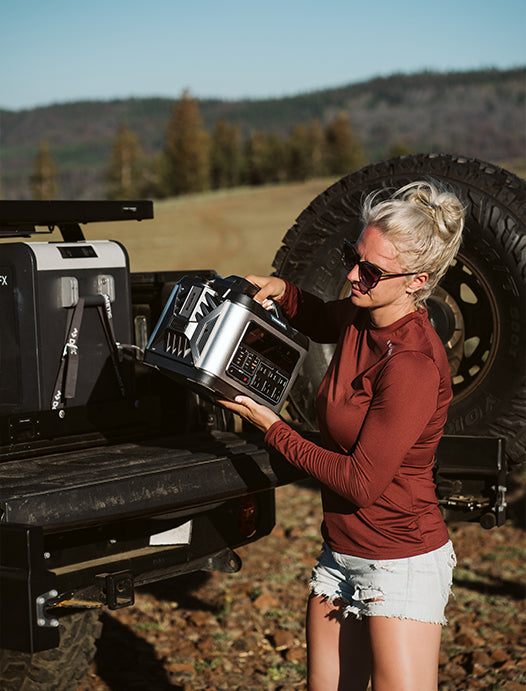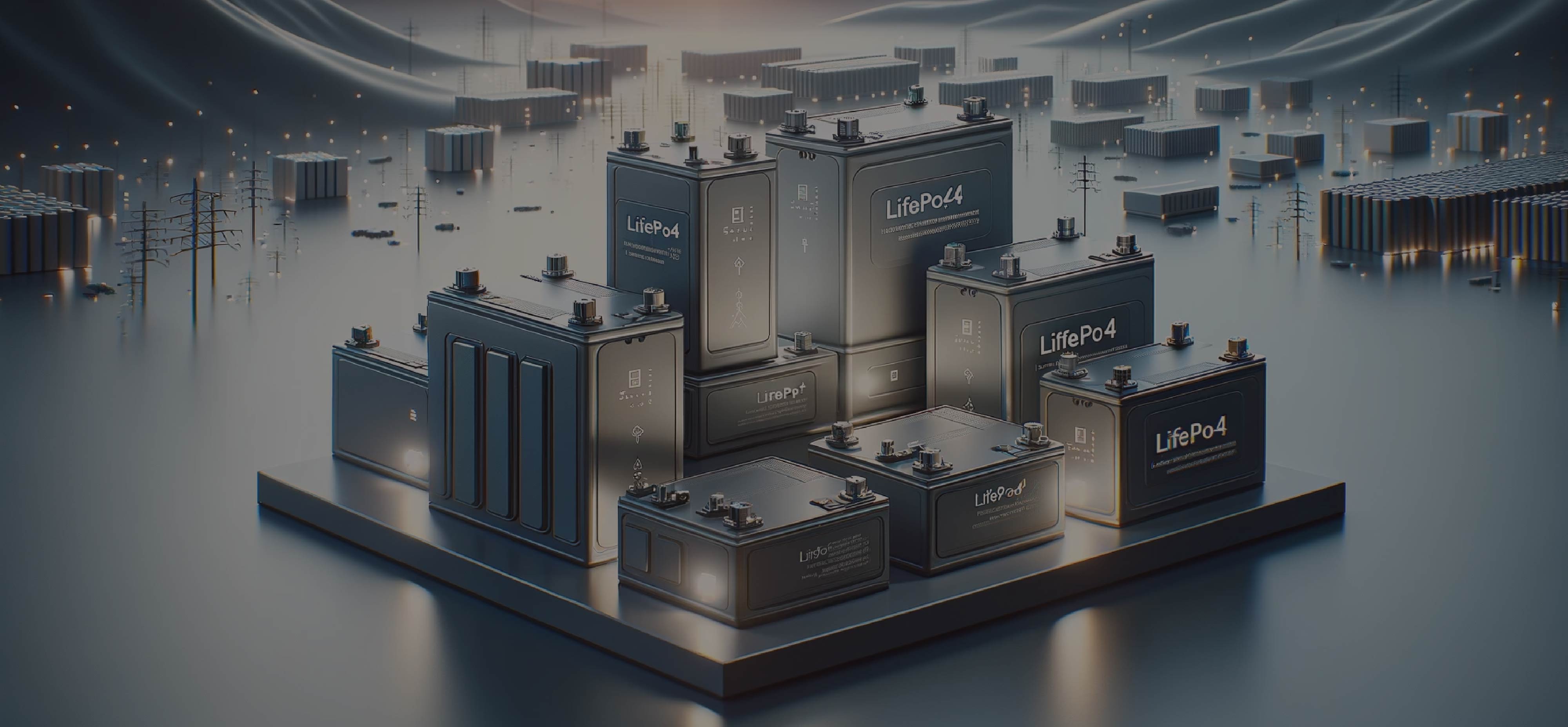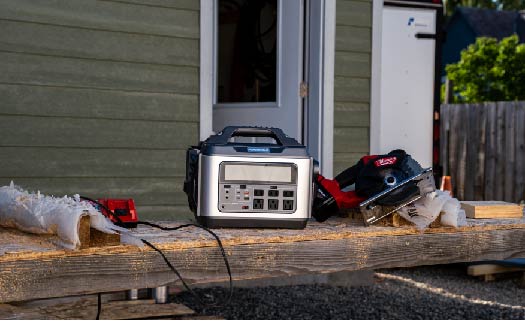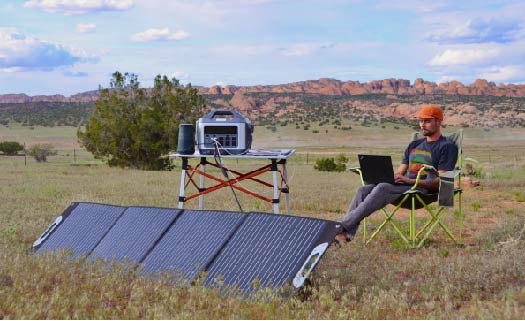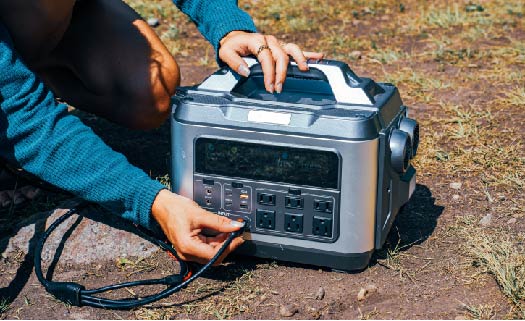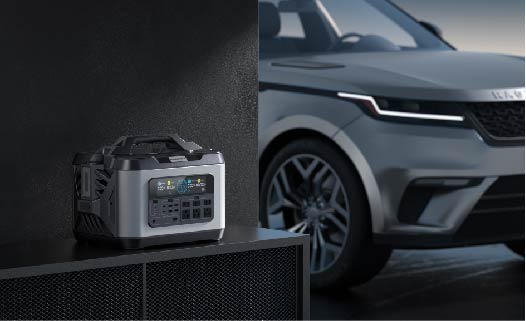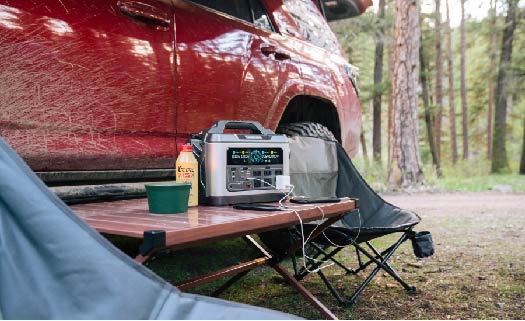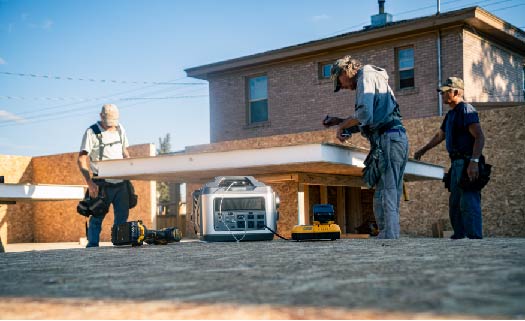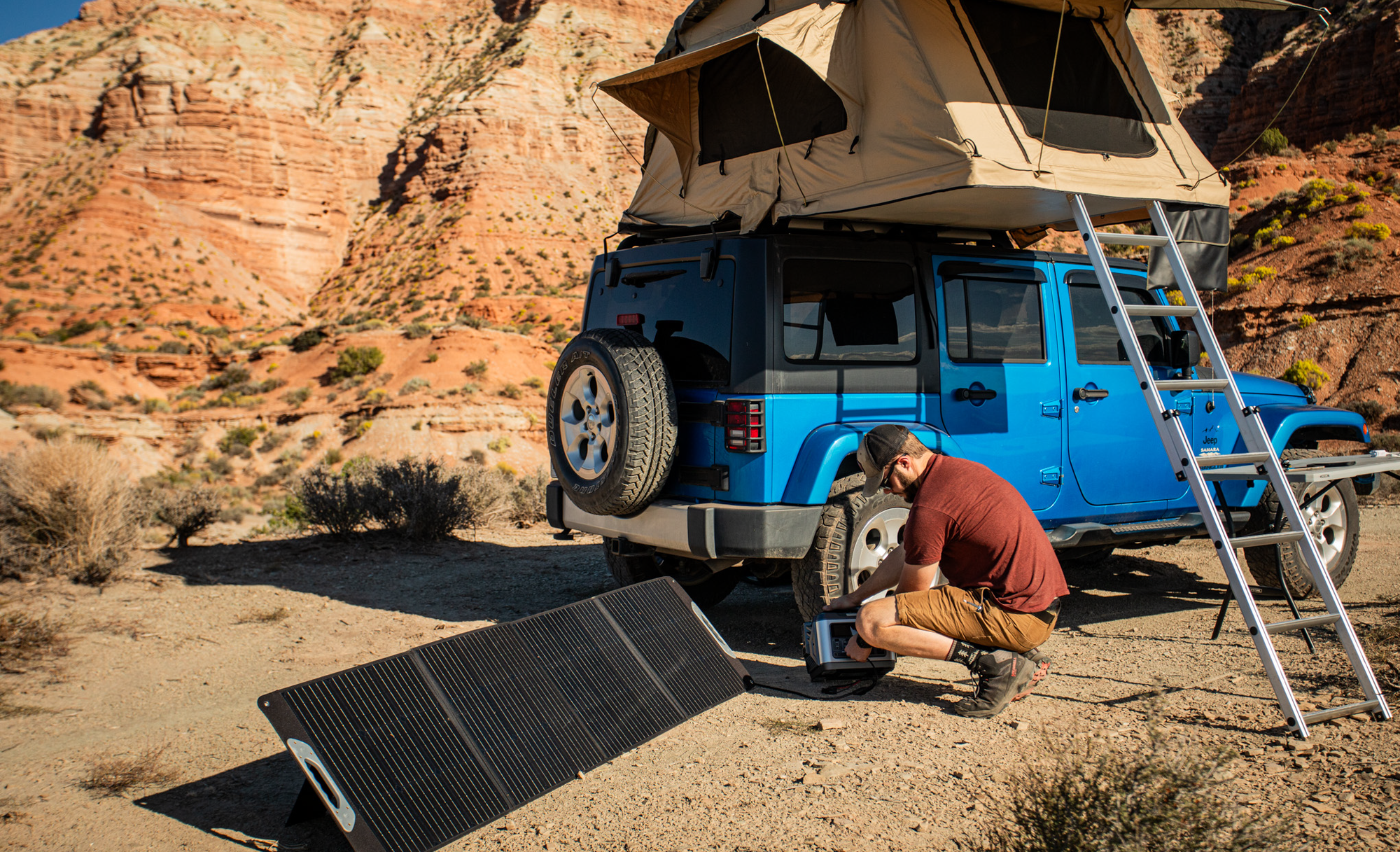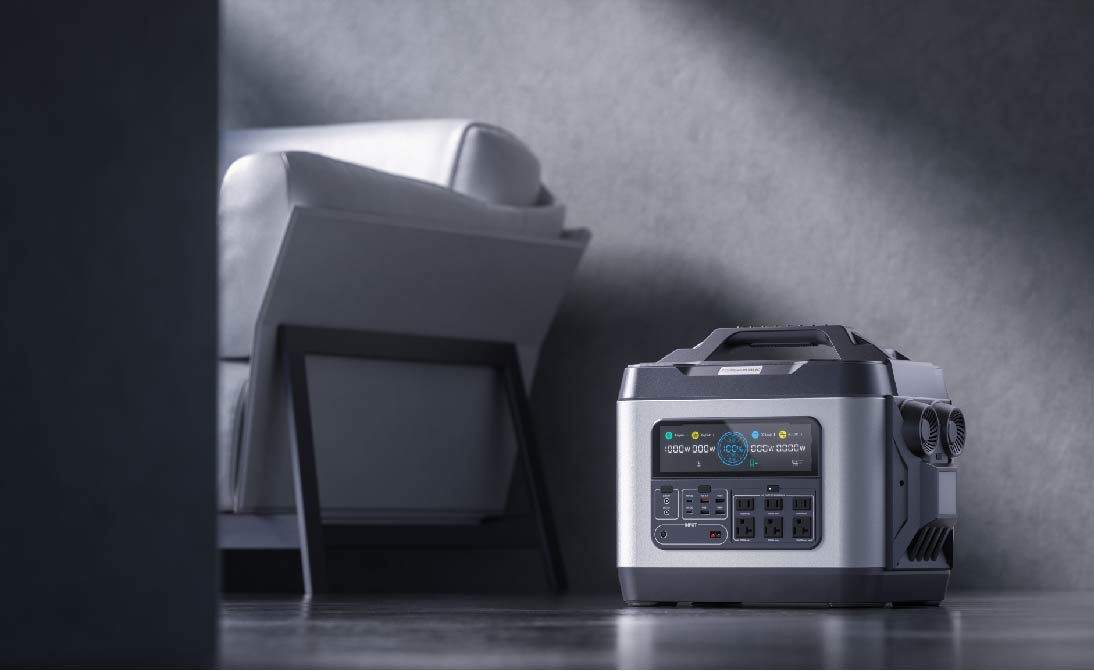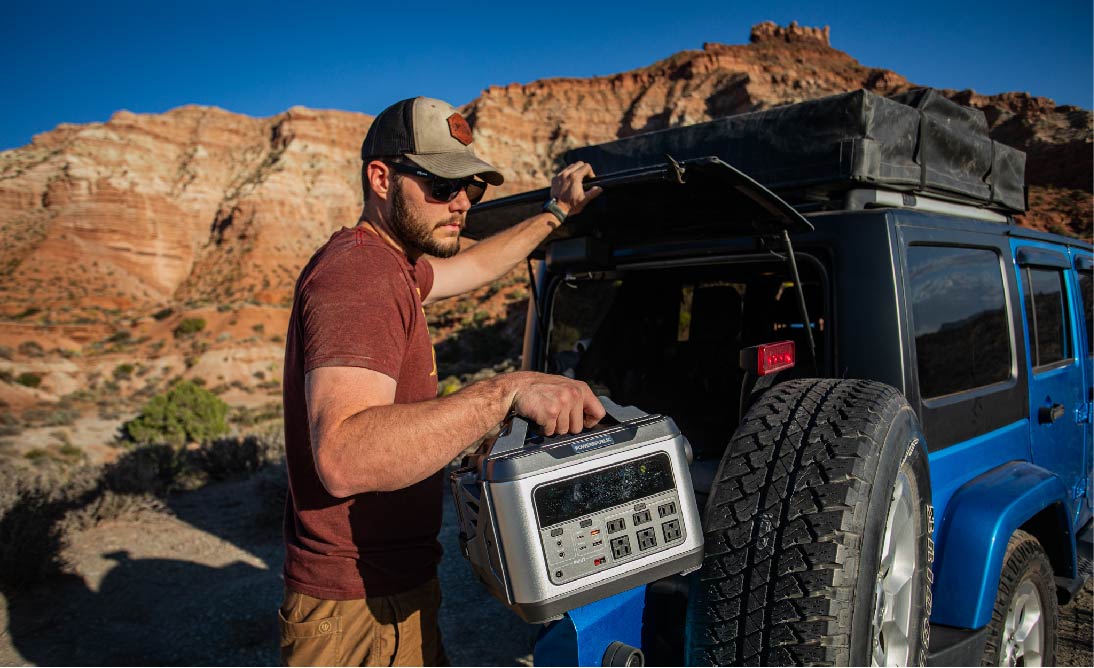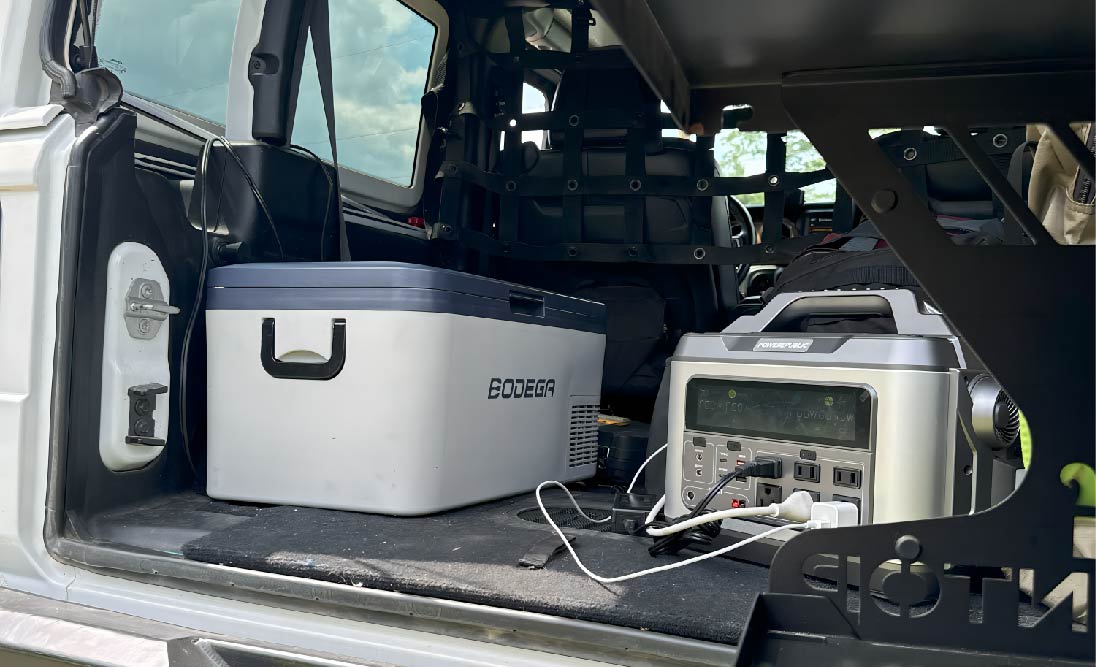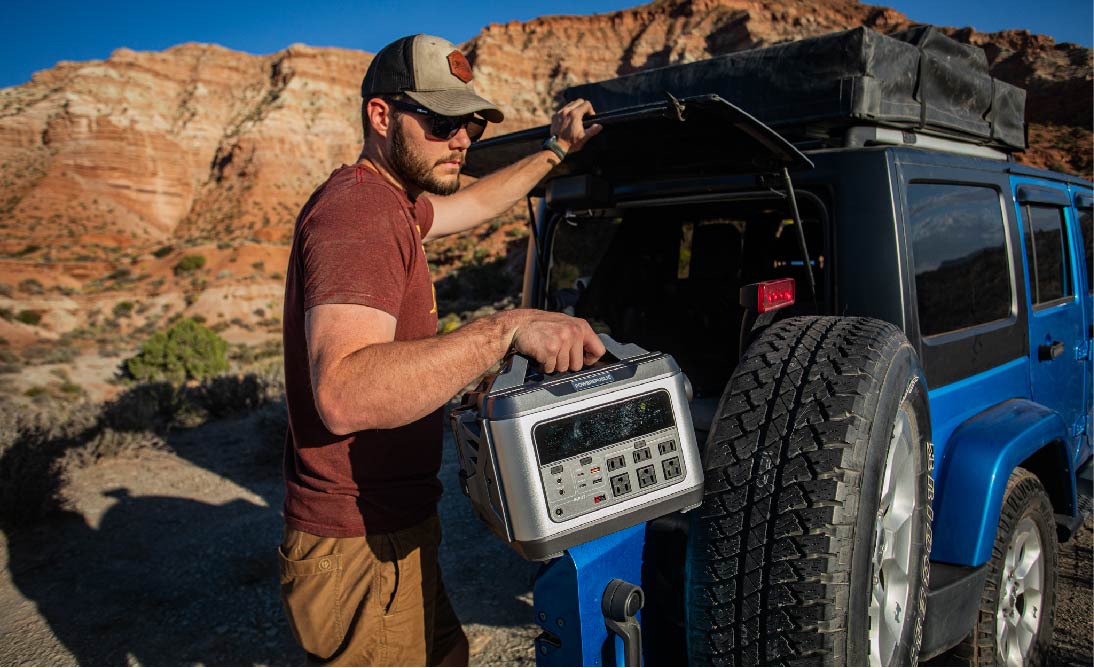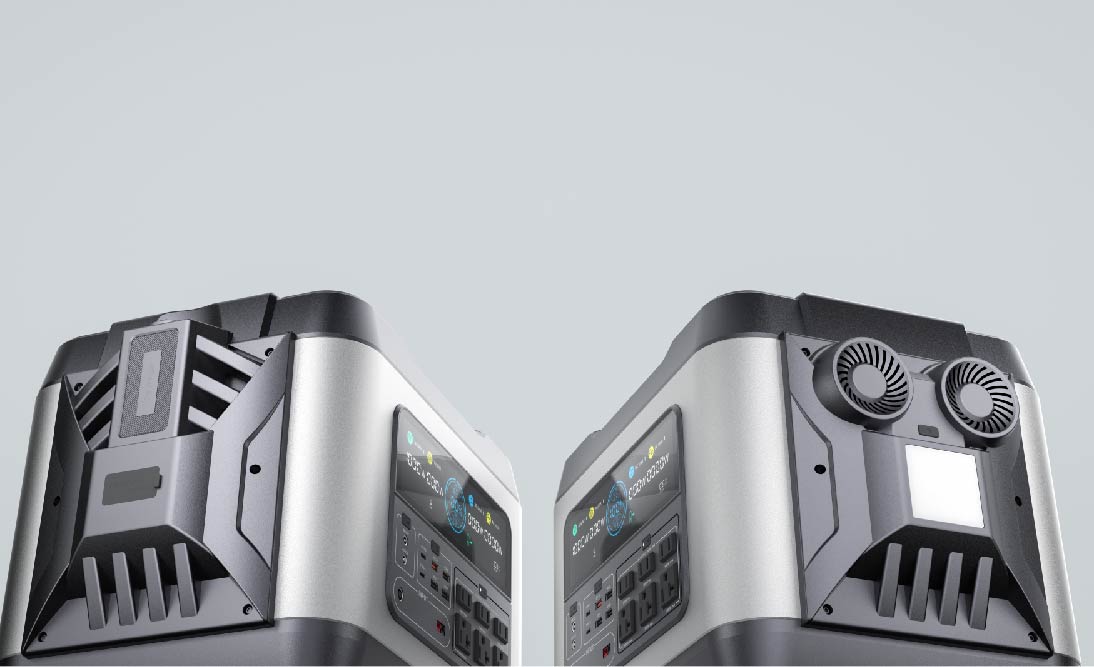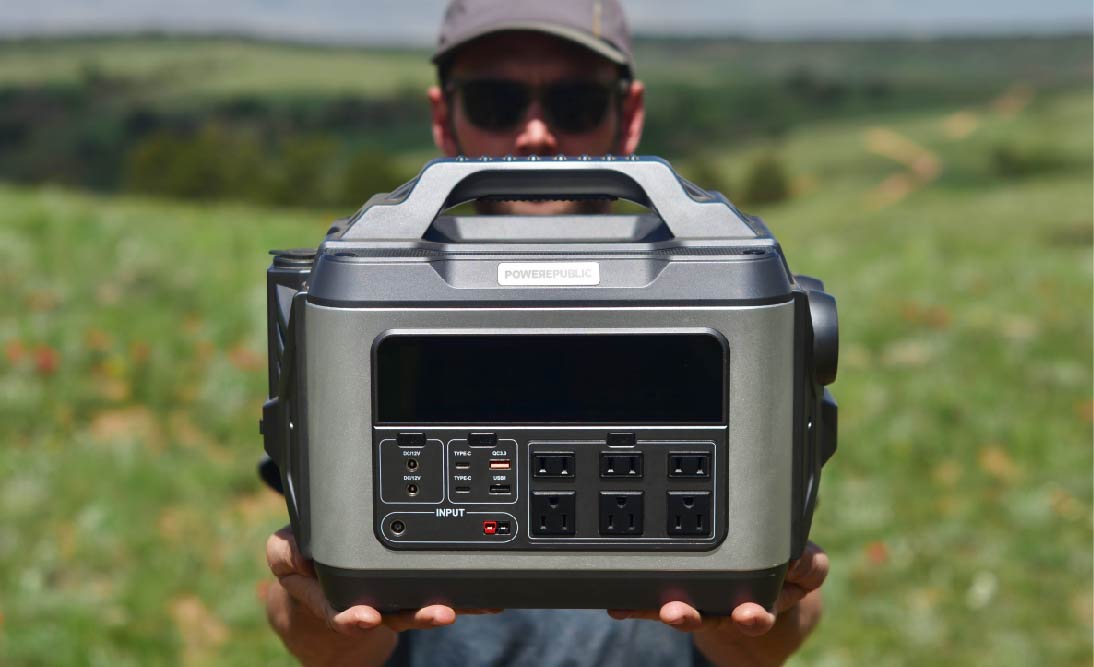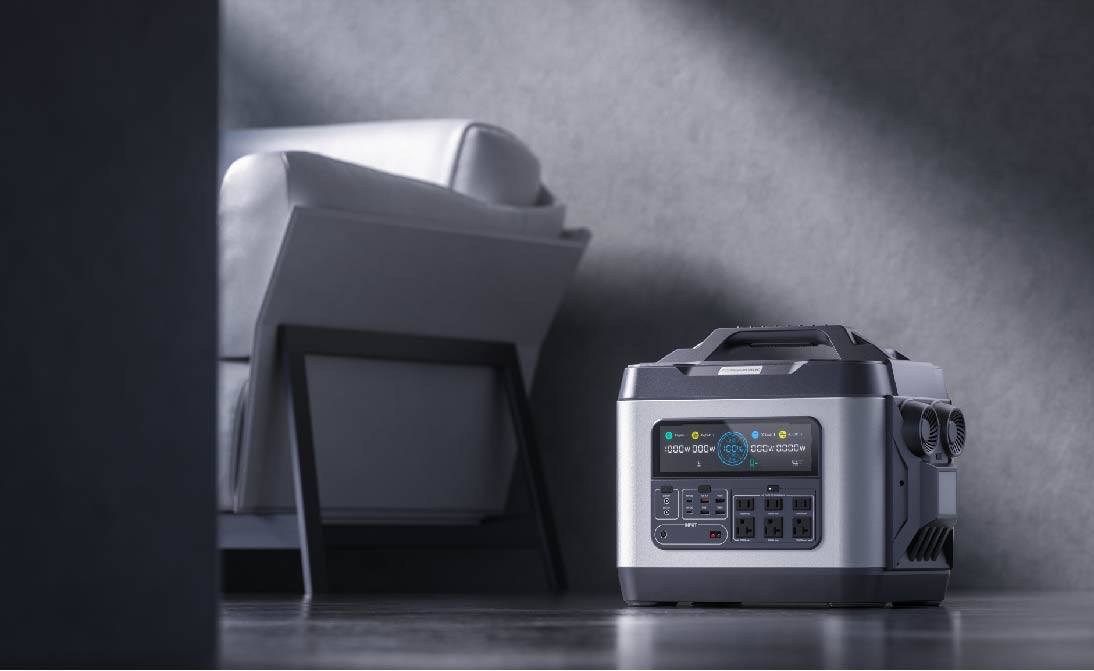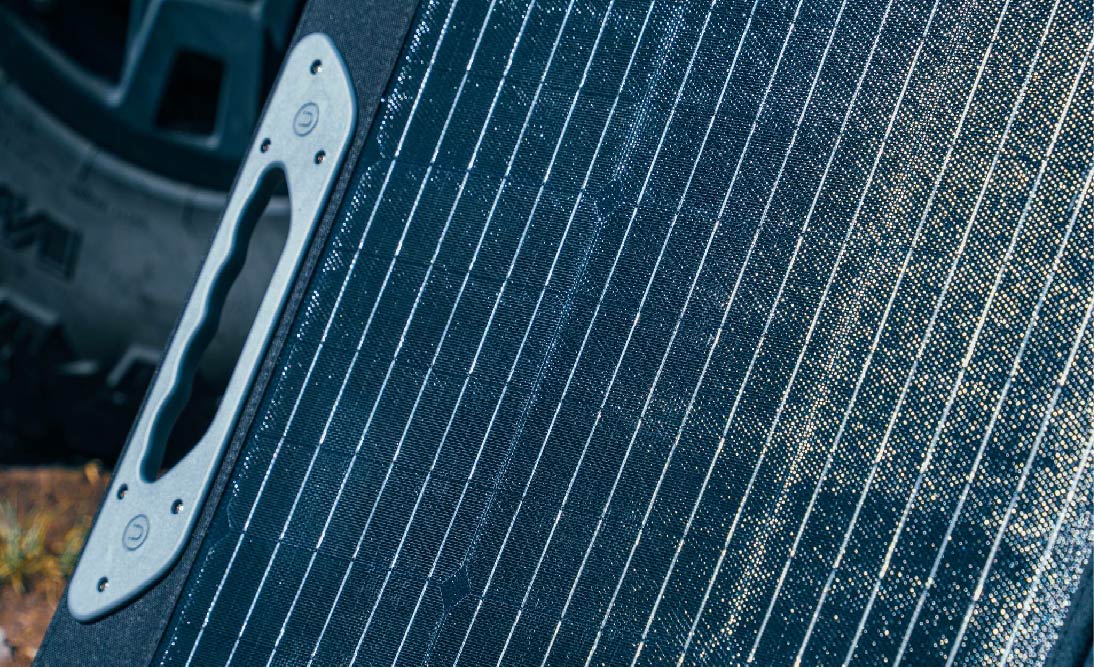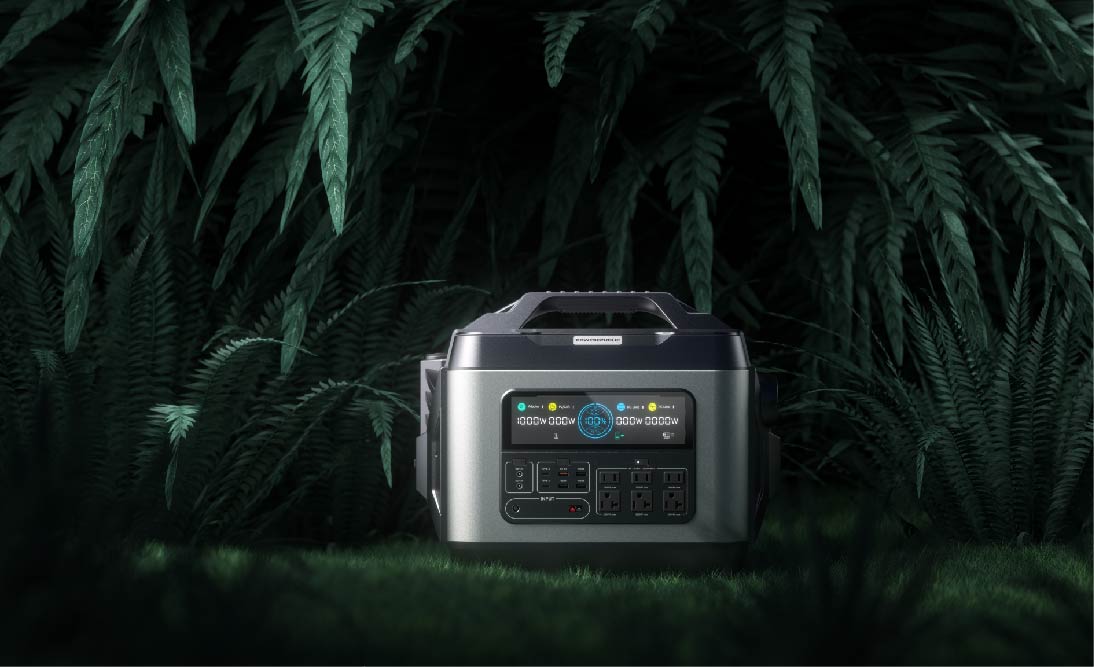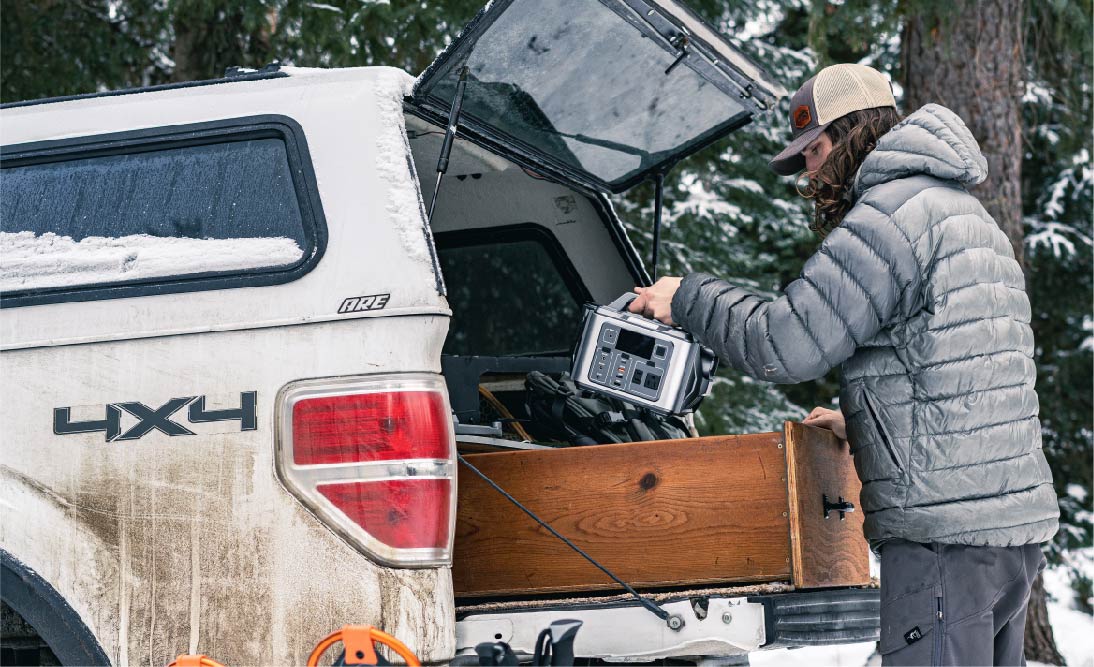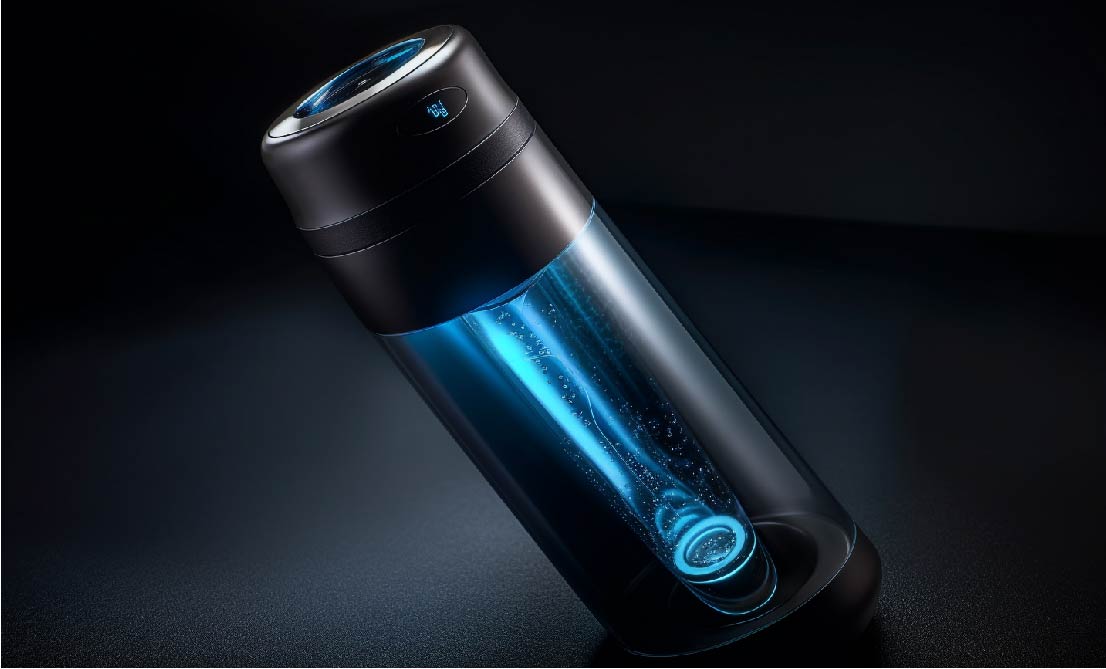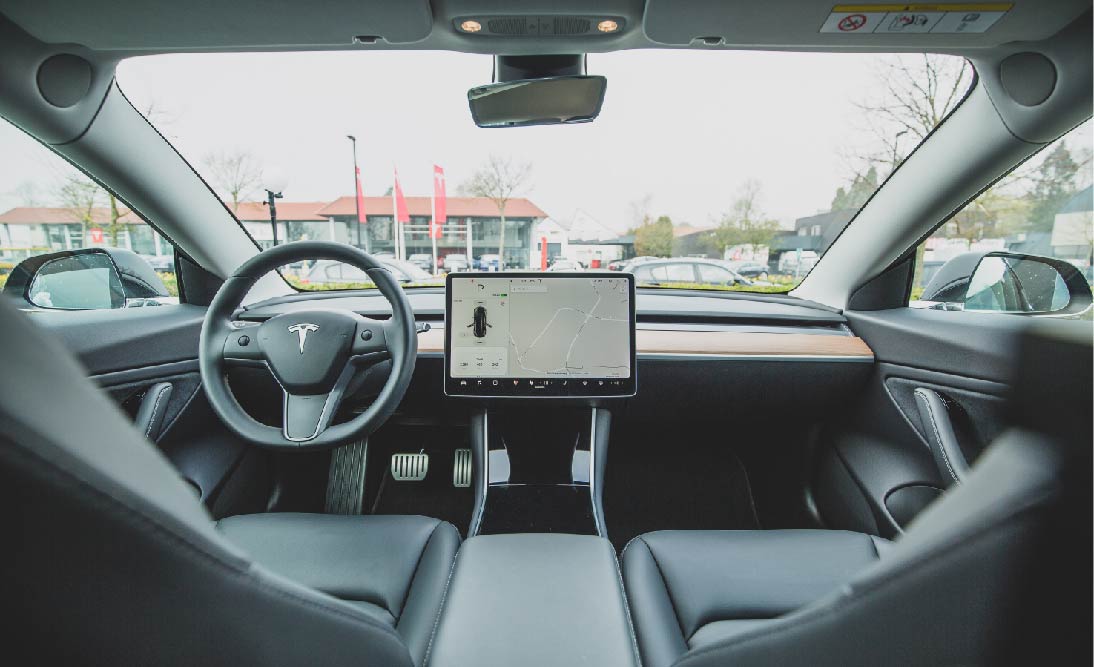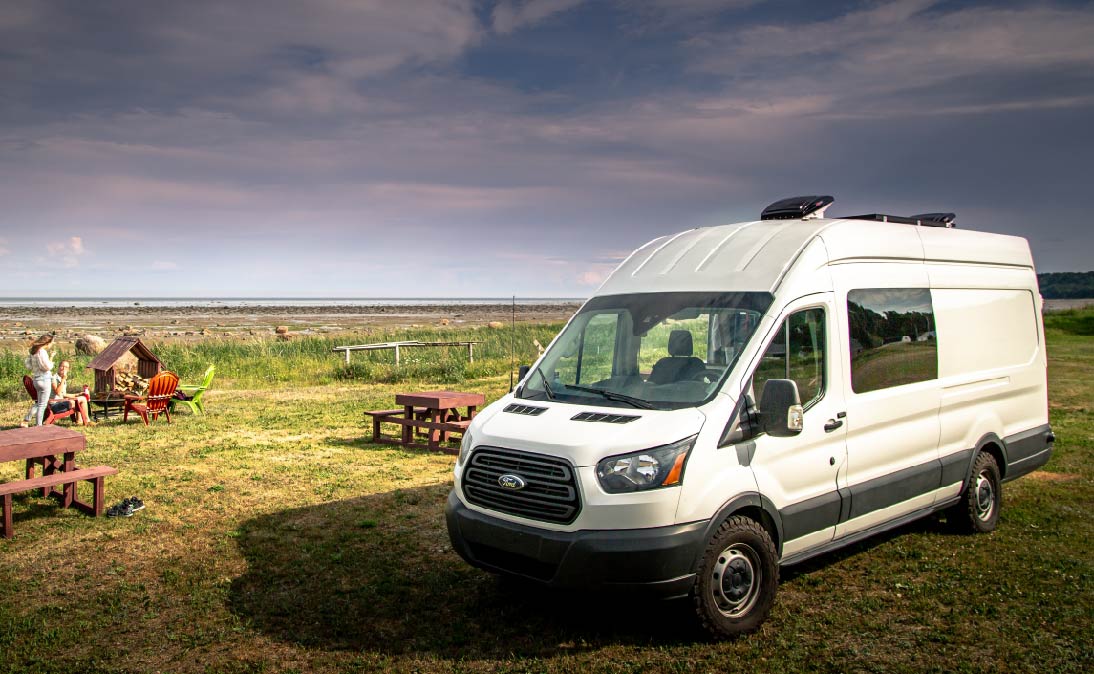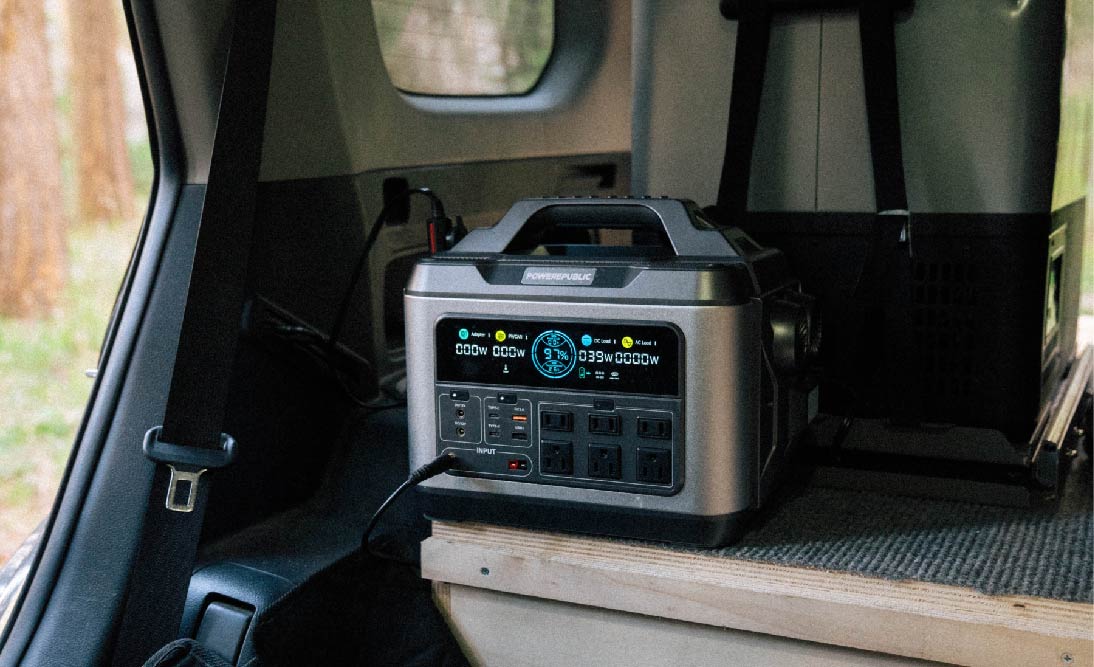Table of Contents:
In this guide, we explore the essentials of LiFePO4 batteries and their advantages over traditional lithium-ion batteries. We'll guide you through selecting the best LiFePO4 battery, focusing on POWEREPUBLIC's LiFePO4 Portable Power Stations. Also, we answer frequently asked questions about the lifespan of these batteries and the longevity of portable power stations. Concluding with final thoughts, this guide is your go-to resource for understanding and choosing the best LiFePO4 battery solutions.
What are LiFePO4 Batteries?

LiFePO4 batteries, also known as LFP batteries, are a sub-type of traditional lithium-ion battery. They have several distinctive characteristics that set them apart from other lithium-ion batteries:
-
Chemical Composition: LiFePO4 batteries use lithium iron phosphate as their cathode material, in contrast to the lithium cobalt oxide (LiCoO2) found in standard lithium-ion batteries. This results in a more stable chemical composition for LiFePO4 batteries.
-
Safety: LiFePO4 batteries are recognized for their robust thermal and chemical stability, significantly enhancing their safety. They have a higher sensitivity to overheating and exhibit greater resistance to thermal runaway than other types of lithium-ion batteries.
-
Long Life Cycle: These batteries typically have a longer lifespan. They can often withstand thousands of charge-discharge cycles with minimal capacity degradation.
-
Environmentally Friendly: The iron phosphate used in these batteries is less toxic than the cobalt and nickel used in other lithium-ion batteries, making LiFePO4 batteries more environmentally friendly.
-
Performance: LiFePO4 batteries exhibit a reduced energy density, resulting in a larger and heavier form for equivalent energy storage. Nonetheless, they provide consistent voltage output during discharge and are capable of functioning across a broad temperature spectrum.
-
Cost: Historically, LiFePO4 batteries were more expensive than other lithium-ion batteries, but the cost has decreased as technology improves and production scales up.
-
Applications: Due to their safety, longevity, and temperature resistance, LiFePO4 batteries are used in many applications, including solar energy storage, and portable electronic devices.
Overall, LiFePO4 batteries offer a combination of safety, longevity, and environmental friendliness, making them a popular choice for many applications, despite their lower energy density and historically higher costs.
LiFePO4 VS. Lithium-ion Batteries: Differences Between Them

LiFePO4 batteries and traditional Lithium-ion batteries are both popular choices for various applications, but they have distinct differences that make them ideal for different uses.
Chemistry and Stability:
-
LiFePO4 Batteries: These batteries are made with lithium iron phosphate in the cathode. They are recognized for their thermal stability and safety, thanks to the phosphate-based chemistry that is more stable and less likely to overheat or experience thermal runaway.
-
Lithium-ion Batteries: Traditional lithium-ion batteries often use lithium cobalt oxide (LiCoO2) or other variations in the cathode. While they offer high energy density, they are more prone to overheating and can pose a greater fire risk if damaged or improperly handled.
Energy Density:
-
LiFePO4: Generally, these have a low energy density compared to traditional lithium-ion batteries. This means they are bulkier for the same amount of stored energy.
-
Lithium-ion: High energy density makes them smaller and lighter for the same capacity, which is a significant advantage in portable electronics and electric vehicles.
Cycle Life:
-
LiFePO4: They usually have a higher and longer cycle life, often exceeding 2000 cycles. This makes them suitable for applications.
-
Lithium-ion: Typically has a shorter cycle life, with most rated for about 500-1000 cycles.
Cost:
-
LiFePO4: Tend to be more expensive upfront due to their longer life and stability.
-
Lithium-ion: Generally cheaper in terms of initial costs, but might need more frequent replacement.
Impact:
-
LiFePO4:These batteries are better for the environment because they have a more stable chemical composition and use less harmful materials.
-
Lithium-ion: The use of cobalt and other heavy metals can raise environmental and ethical concerns, especially regarding mining practices.
Applications:
-
LiFePO4: Commonly used in applications requiring long life and stability, like solar power storage, electric vehicles, and backup power systems.
-
Lithium-ion: Widely used in consumer electronics like smartphones, laptops, and also in electric vehicles where weight and space are critical factors.
Overall, selecting between LiFePO4 and traditional Lithium-ion batteries hinges on the unique needs of the application, taking into account factors such as safety, dimensions, weight, energy capacity, lifespan, expense, and ecological considerations. LiFePO4 batteries are advantageous for their safety and extended life, whereas conventional Lithium-ion batteries excel in offering greater energy density and compactness.
How To Select The Best LiFePO4 Battery?

Selecting the best LiFePO4 (Lithium Iron Phosphate) battery requires careful consideration of several factors, including your specific energy needs, the battery's specifications, and long-term performance. Let's go through a step-by-step guide:
|
Step |
Explanation |
Example/Calculation |
|
1. Energy Requirements |
Calculate total energy demand in Watt-hours (Wh). |
The device uses 100W for 5 hours: 100W×5h=500Wh |
|
2. Capacity Selection |
Choose battery capacity in Ampere-hours (Ah). |
For 500Wh on a 12V system: 500Wh/12V≈41.67Ah. With buffer, aim for ~50Ah. |
|
3. Voltage Compatibility |
Ensure battery voltage matches your system. |
Common configurations: 12V, 24V, 48V. |
|
4. Cycle Life |
Opt for a battery with a high cycle life. |
Choose >2000 cycles for longer life. |
|
5. Discharge & Charge Rates |
Evaluate maximum discharge and charge rates. |
System peak at 10A on 12V: Battery should support 10A×12V=120W. |
|
6. Environmental Factors |
Consider operating temperature and conditions. |
Ensure battery efficiency in your specific environment. |
|
7. Additional Features |
Look for a Battery Management System (BMS), connectivity options, etc. |
BMS for overcharge protection, Bluetooth for monitoring. |
|
8. Cost & Warranty |
Balance initial cost with long-term benefits and warranty length. |
Longer warranties can indicate better quality. |
|
9. Brand & Reviews |
Research brand reputation and user reviews. |
Read user experiences and expert opinions for insights. |
This table provides a structured approach to selecting a LiFePO4 battery, ensuring all critical aspects are considered for the best possible choice. Remember, this is a simplified example. Real-world scenarios might need more detailed calculations and considerations.
Best LiFePO4 Battery: POWEREPUBLIC LiFePO4 Portable Power Stations

For those seeking time-saving solutions and requiring minimal technical knowledge, consider POWEREPUBLIC LiFePO4 portable power stations: T2200 and T3000. These two models are powerful, compact, and all-in-one, making them ideal for reliable power solutions. To know the versatility and functionality of these 2 models, let’s refer to the table below:
|
Model |
Specs & Features |
Est.Operation Time(hours) |
|
2200W/2240Wh Surge 4500W LiFePO4 batteries with a cycle greater than 3000 Rugged and Durable Aluminum-alloy body 15 Output Ports LED light on the side Built-in BMS User-Friendly LCD Screen for Monitoring 230W Solar Input |
Microwave(600-1200W): 1.5 to 3 Refrigerator(100-800W): 2.3 to 19 Washing Machine(500-1500W): 1.2 to 3.8 Air Conditioner (500-1500W): 1.2 to 3.8 Dishwasher(1200-1500W): 1.2 to 1.5 Electric Oven(1000-1200W): 2 to 1.5 Vacuum Cleaner(500-1500W): 1.2 to 3.8 Electric Drill(500-1000W): 2 to 3.8 Circular Saw(1000-1500W): 1.2 to 2 Air Compressor(1000-2000W): 1 to 2 |
|
|
3000W/3200Wh Surge 6000W LiFePO4 batteries with a cycle greater than 3000 Rugged and Durable Aluminum-alloy body 15 Output Ports LED light on the side Built-in BMS User-Friendly LCD Screen for Monitoring 230W Solar Input |
Microwave(600-1200W): 2.2 to 4.5 Refrigerator(100-800W): 3.5 to 27 Washing Machine(500-1500W): 1.8 to 5.5 Air Conditioner (500-1500W): 1.8 to 5.5 Dishwasher(1200-1500W): 1.8 to 2.3 Electric Oven(1000-1200W): 2.3 to 2.7 Vacuum Cleaner(500-1500W): 1.8 to 5.5 Electric Drill(500-1000W): 2.7 to 5.5 Circular Saw(1000-1500W): 1.8 to 2.7 Air Compressor(1000-2000W): 1.3 to 2.7 |
Please note that:
Est.Operation Time(h)=Capacity(Wh)*0.85/Power of the device(W)
FAQ I: What's The Lifespan of LiFePO4 Batteries?

The lifespan of LiFePO4 (Lithium Iron Phosphate) batteries is typically longer than traditional lithium-ion batteries.
They generally last for about 2000 to 5000 charge-discharge cycles. Assuming a daily cycle, this translates to roughly 5 to 14 years of use. The actual lifespan can vary depending on factors like usage patterns, depth of discharge, charging practices, and environmental conditions. Proper maintenance and usage within recommended parameters can extend their lifespan.
FAQ II: How Long Do Portable Power Stations Last?

The lifespan of portable power stations depends on several factors, including the type of battery used, the quality of the components, and usage patterns.
Most portable power stations use lithium-ion or LiFePO4 batteries. Generally, they can last between 3 to 5 years or more, depending on their cycle life and how they are used and maintained. The number of charge cycles for these devices typically ranges from 500 to 2000 cycles, with LiFePO4-based power stations often at the higher end of this range. Regular use and proper charging practices can influence the overall lifespan of portable power stations.
Final Thoughts
In conclusion, when searching for the best LiFePO4 battery, it's essential to consider factors like capacity, cycle life, and additional features like a Battery Management System. POWEREPUBLIC's LiFePO4 Portable Power Stations, particularly the T2200 and T3000 models, stand out in this category. These power stations offer a blend of high wattage, extensive cycle life, and practical design, making them ideal for various applications, from household appliances to outdoor activities. Their robust construction and user-friendly interfaces ensure reliability and ease of use. The estimated operation times for common appliances further demonstrate their efficiency and versatility.
Suppose you're looking for a reliable and efficient power solution. In that case, the POWEREPUBLIC LiFePO4 Portable Power Stations are undoubtedly some of the best LiFePO4 batteries available in the market, combining quality, durability, and performance in a compact, user-friendly package.
